Balancing Glass Trick
Table tricks are all the rage when it comes to post-dinner “oohs” and “ahhs.” All you need are some knives, bottles, and a drinking glass. […]
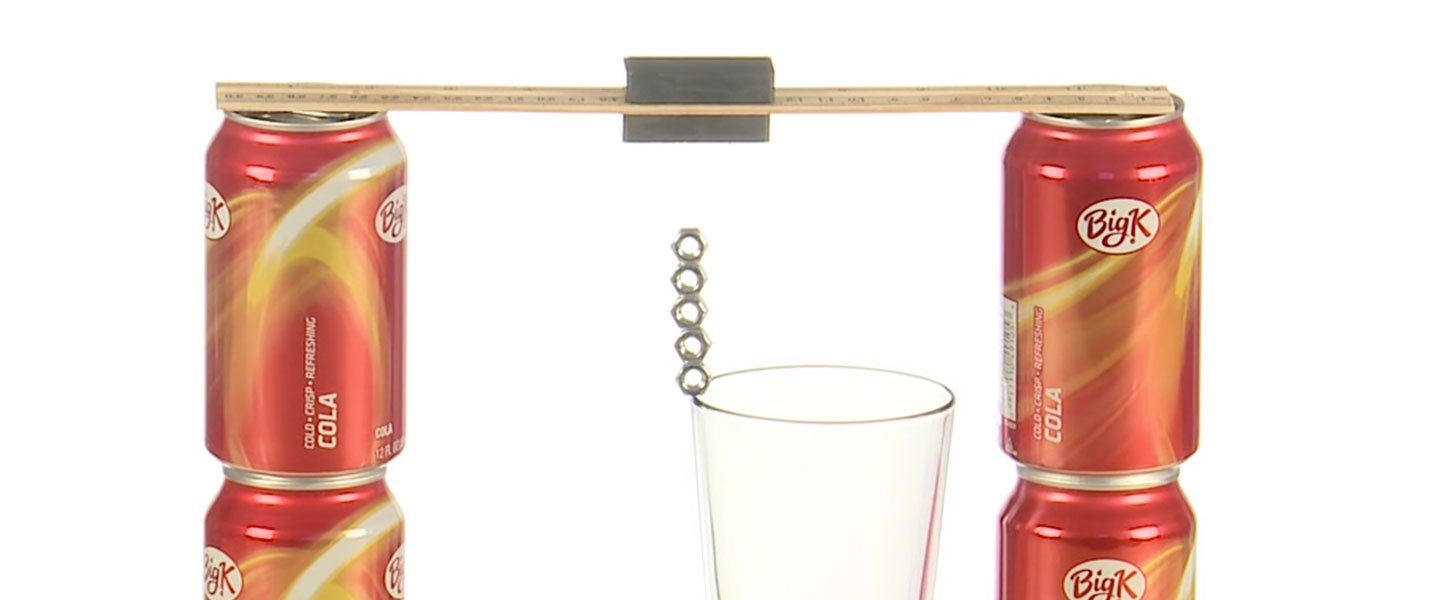
It’s possible that you have such great eye-hand coordination and rock-steady nerves that stacking five hex nuts on the rim of a glass is how you begin each day. This activity clearly shows the advantage of using magnets for some setups. Learn about creating internal magnetic fields.
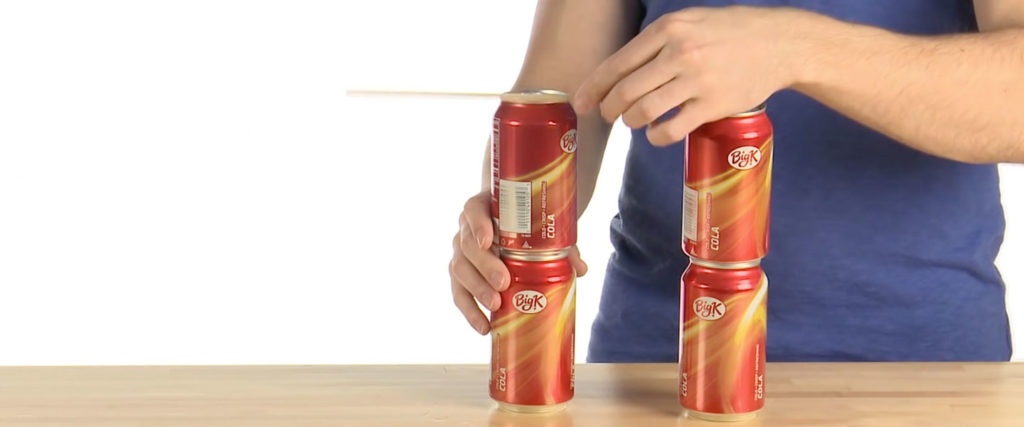
Stack the soda cans two high at each end of the ruler. Set the ruler on top to bridge the towers.
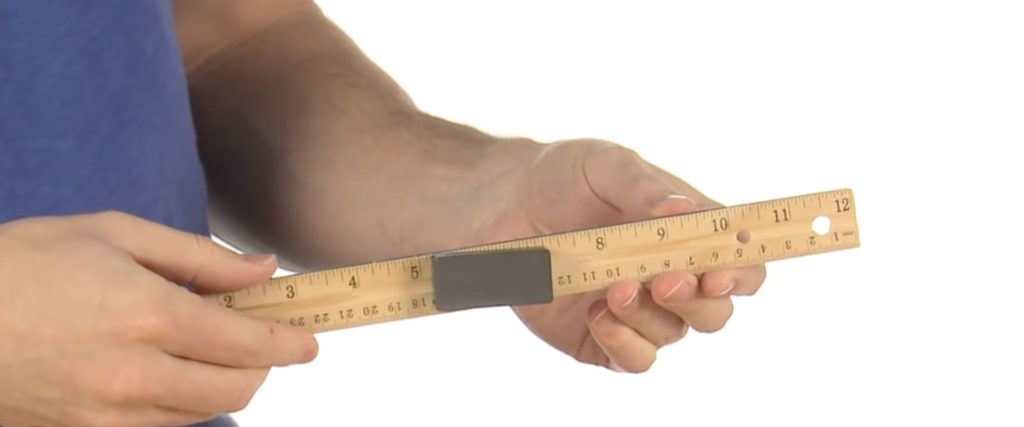
Place a magnet on either side of the ruler at its midpoint. The magnets need to attract and hold each other in place. The ruler should be sandwiched between them.
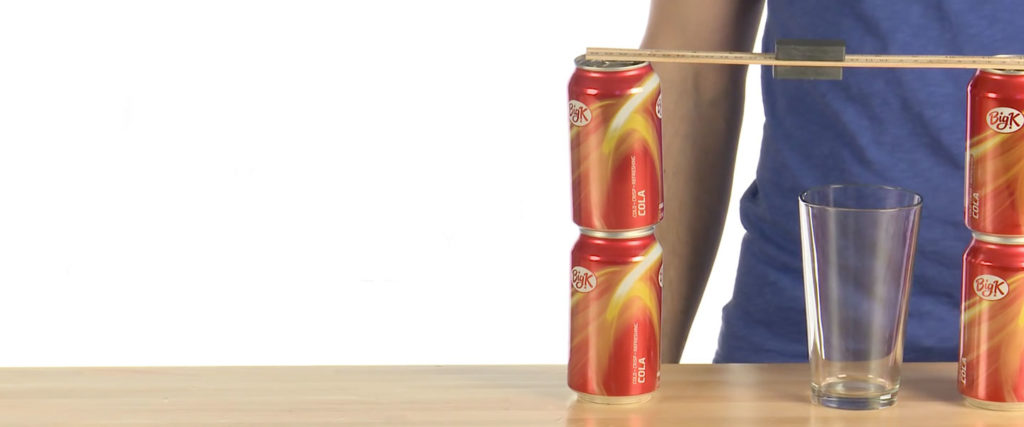
Set the ruler on top of the two towers so the magnets are centered. Place the drinking glass on the table between the towers so a point on the rim of the glass is centered below the magnets.
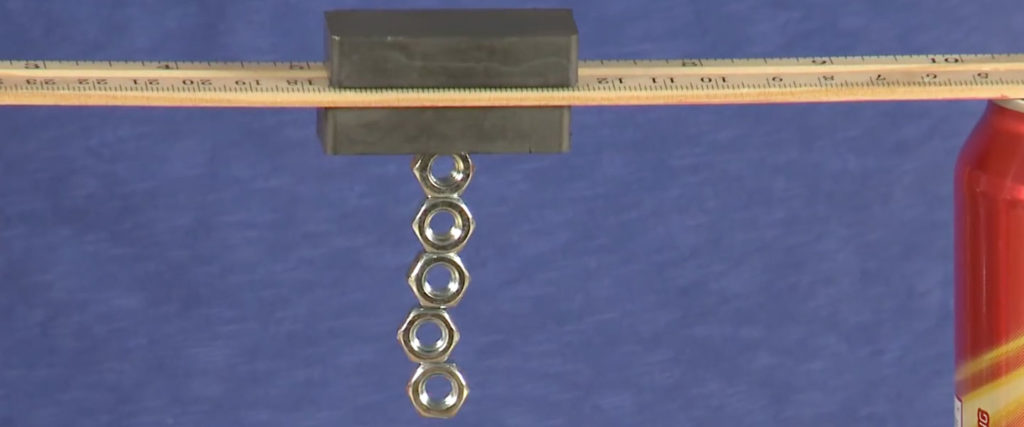
Attach the hex nuts to the magnet underneath the ruler so one hex nut is connected to another in a hanging column. All five hex nuts should hang down from the magnet in a single “nutcicle.” Build it as straight as you can.
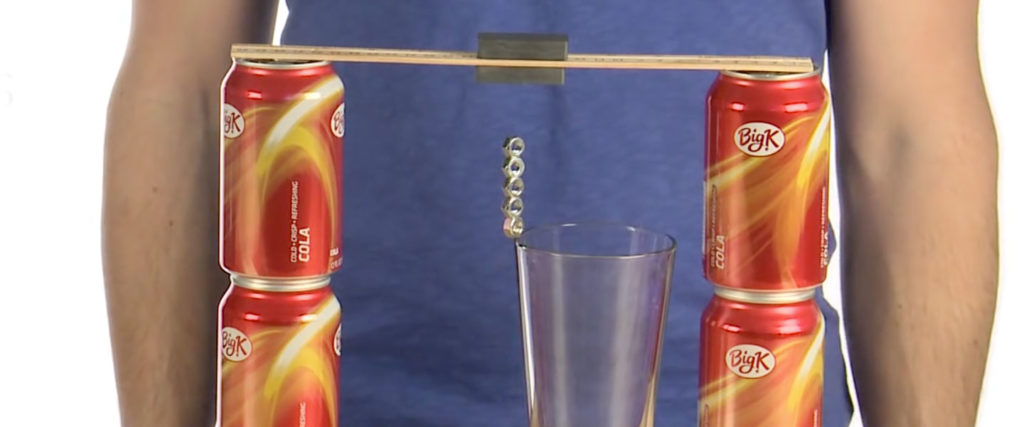
Slowly detach the nutcicle from the magnet and lower it to the rim of the glass directly under the magnet. Balance the stack on the rim of the glass very carefully. Make sure the hex nuts are directly below the magnet on the rim of the glass. This may take a few practice runs but you’ll get it.
The hex nuts will precariously balance on the rim of the drinking glass. Now’s the time to admire your work. When you’re ready for it, remove the magnets and watch the stack collapse.
As you attach hex nut under hex nut to the magnet, it’s easy to see that the magnets are causing them to attract and hold on to each other. While the hex nuts are in contact with the magnet, they actually develop their own internal magnetic field. These weak magnetic fields will remain after you detach the hex nuts from the magnets, too.
When you balance the hex nuts on the edge of the drinking glass below the magnets, they still have a little bit of that magnetism left. This weak field is just enough to attract the hex nuts to the overhead magnets’ much stronger field. As you’d expect, they remain as a wobbly stack until the magnets are removed. After that, gravity wins the day!
By the way, the magnetism you induced into the hex nuts is temporary and quite fragile. It can be easily disrupted by dropping or throwing the hex nuts onto a hard surface. Excess heat and cold can disrupt it also. Smacking them with a hammer is a field killer, too. That’s why careful handling of magnets is such a good idea.
There are variations for this activity you’ve probably already considered.